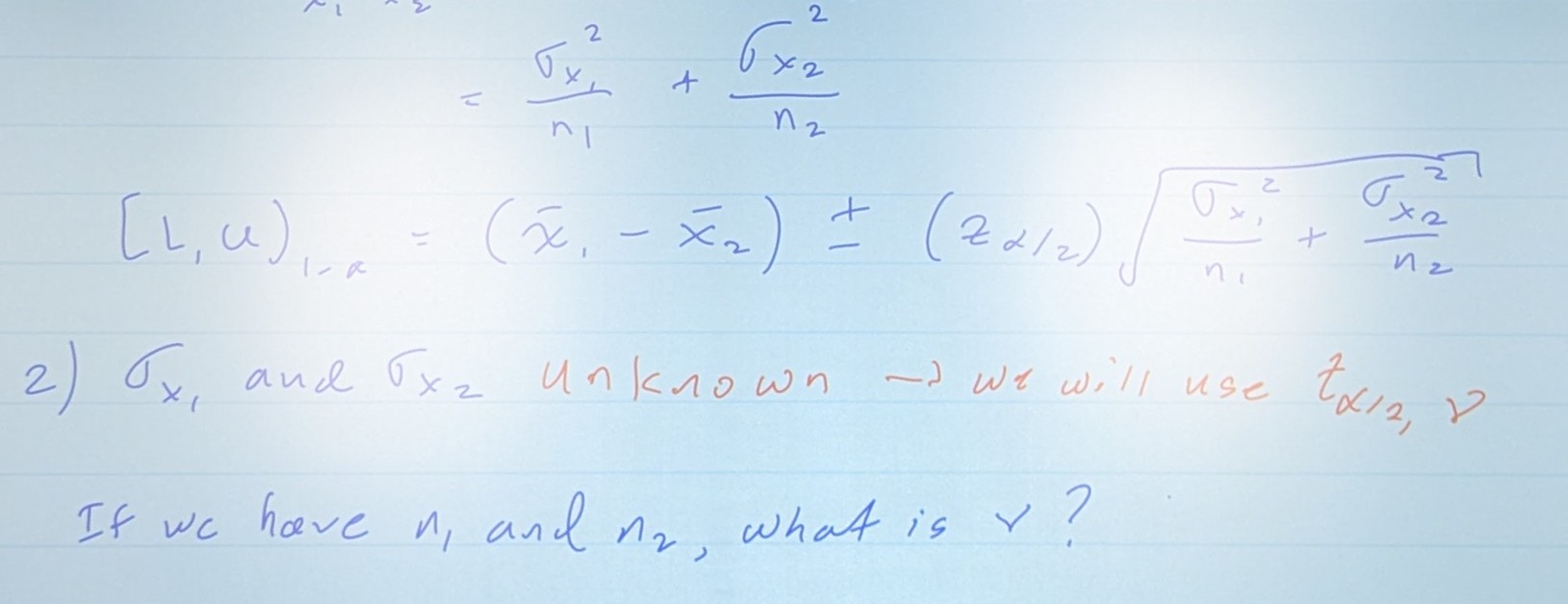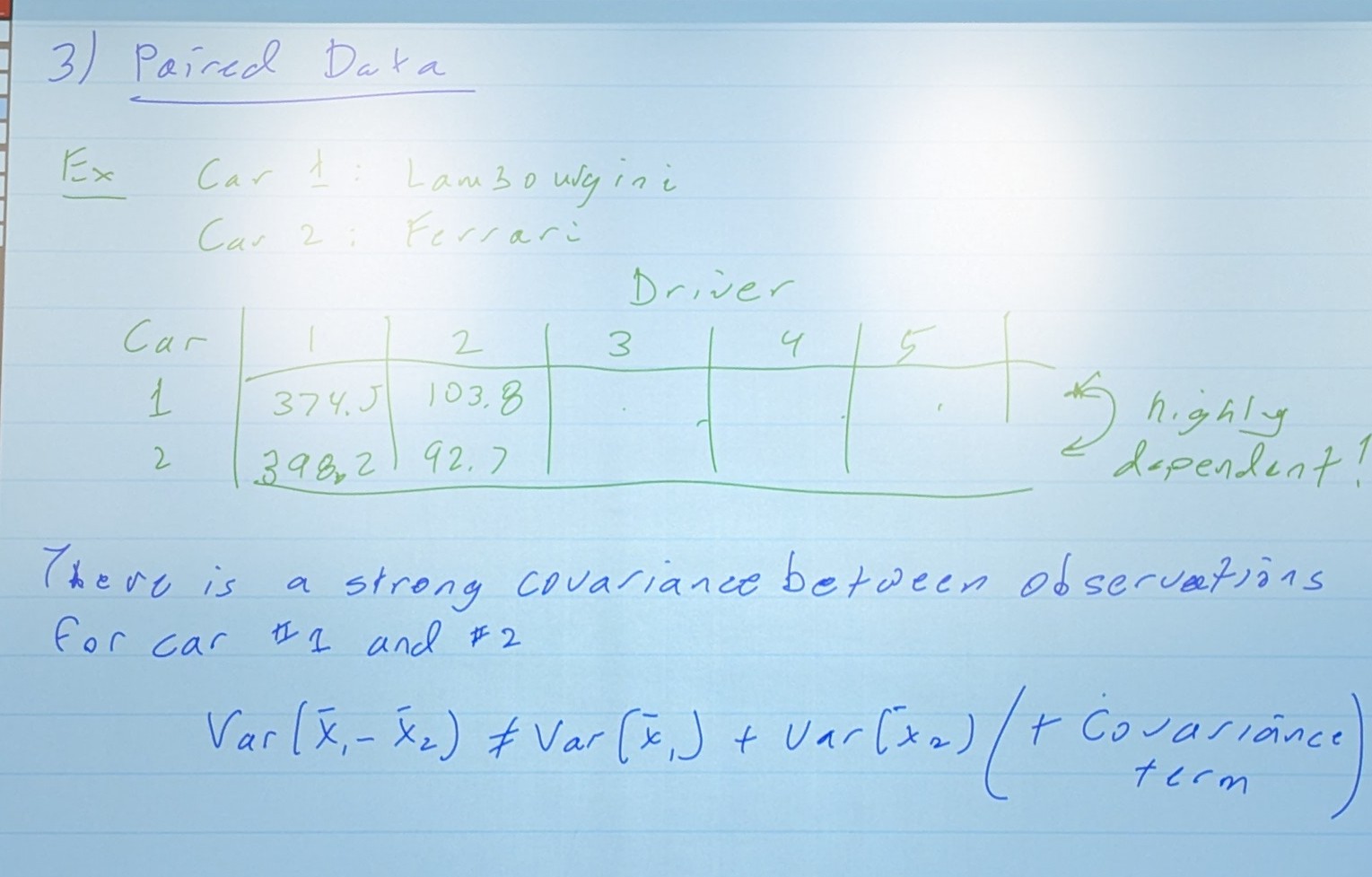Three Cases
- Where and are known
where = Var() = .

- and are unknown (*we will use
- If we have n1 and n2, what is V? (see notes for expression for V)
- Simplifying assumption that = = (unknown), we get an improved estimate of by pooling the data
- This is the weighted average of S<sub>1</sub><sup>2</sup> and S<sub>2</sub><sup>2</sup>
Where
and
If $u_1$ = $n_2$, then Sp<sup>2</sup> = $S_p^2 = \frac{(n_1 - 1)S_1^2 + (n_2 - 1)S_2^2}{(2(n-1)}$ = $\frac{1}{2}(S_1^2 + S_2^2)$
Now $\nu$ = n<sub>1</sub> + n<sub>2</sub> -2

- Paired Data

Solution: Take differences: Let Di = , & di =
Now compute
Where is an estimate of . We will also need
Now,
In order for two pieces of data to be paired, they must have some sort of correlation.